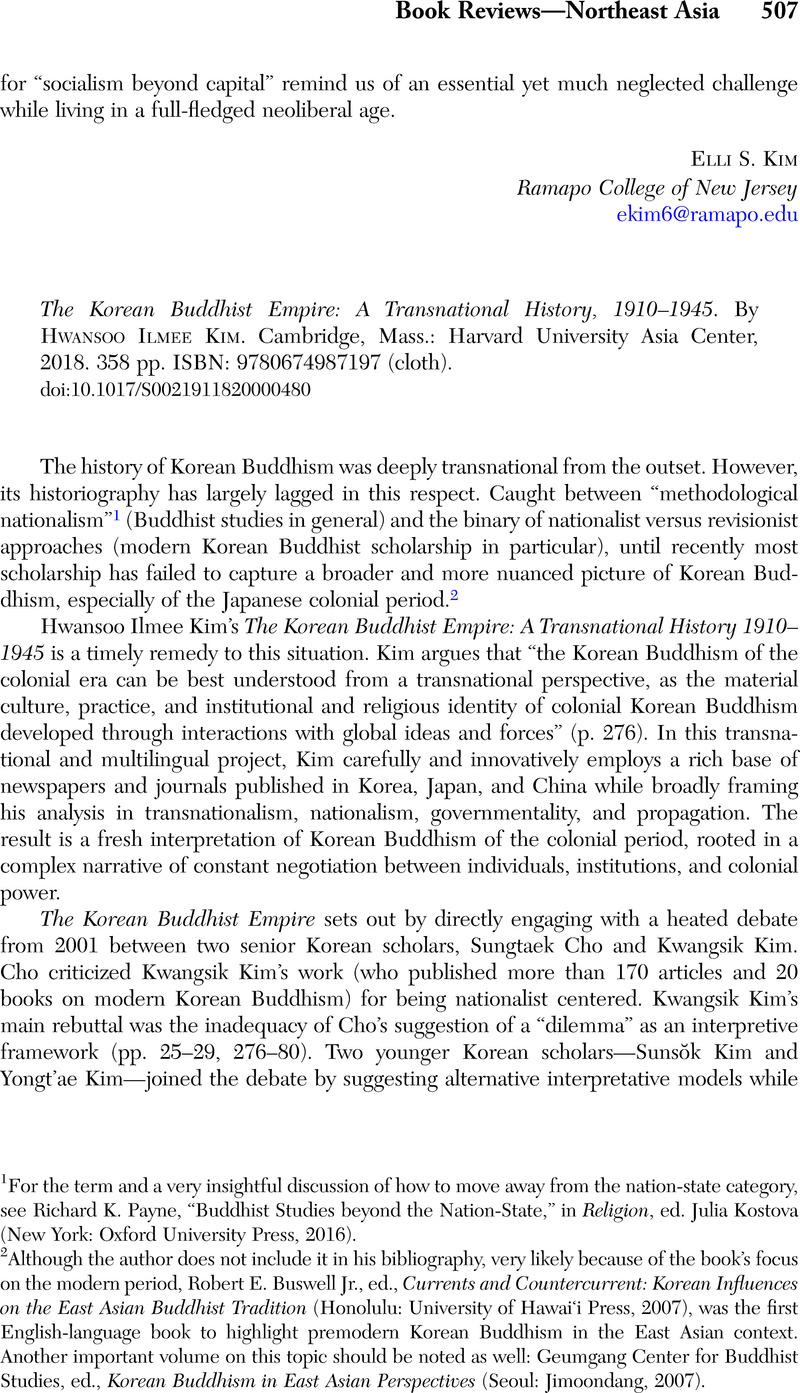No CrossRef data available.
Published online by Cambridge University Press: 16 June 2020

1 For the term and a very insightful discussion of how to move away from the nation-state category, see K. Payne, Richard, “Buddhist Studies beyond the Nation-State,” in Religion, ed. Kostova, Julia (New York: Oxford University Press, 2016)Google Scholar.
2 Although the author does not include it in his bibliography, very likely because of the book's focus on the modern period, Robert E. Buswell Jr., ed., Currents and Countercurrent: Korean Influences on the East Asian Buddhist Tradition (Honolulu: University of Hawai‘i Press, 2007), was the first English-language book to highlight premodern Korean Buddhism in the East Asian context. Another important volume on this topic should be noted as well: Geumgang Center for Buddhist Studies, ed., Korean Buddhism in East Asian Perspectives (Seoul: Jimoondang, 2007).
3 Research on Korean Buddhist periodicals as part of transnational Buddhist print culture would be a fruitful avenue for further study. This is briefly covered in Mark Nathan, From the Mountains to the Cities: A History of Buddhist Propagation in Modern Korea (Honolulu: University of Hawai‘i Press, 2018), 65. For the case of Japan, see Lori Pierce, “Buddhist Modernism in English-Language Buddhist Periodicals,” in Issei Buddhism in the Americas, eds. Duncan Ryuken Williams and Tomoe Moriya (Urbana: University of Illinois Press, 2010), 87–109. For China, see Jan Kiely, “Spreading the Dharma with the Mechanized Press: New Buddhist Print Cultures in the Modern Chinese Print Revolution,” in From Woodblocks to the Internet: Chinese Publishing and Print Culture in Transition, circa 1800 to 2008, eds. Cynthia Brokaw and Christopher A. Reed (Leiden: Brill, 2010), 185–210; Gregory Adam Scott, “A Revolution of Ink: Chinese Buddhist Periodicals in the Early Republic,” in Recovering Buddhism in Modern China, eds. Jan Kiely and J. Brooks Jessup (New York: Columbia University Press, 2016), 111–40.